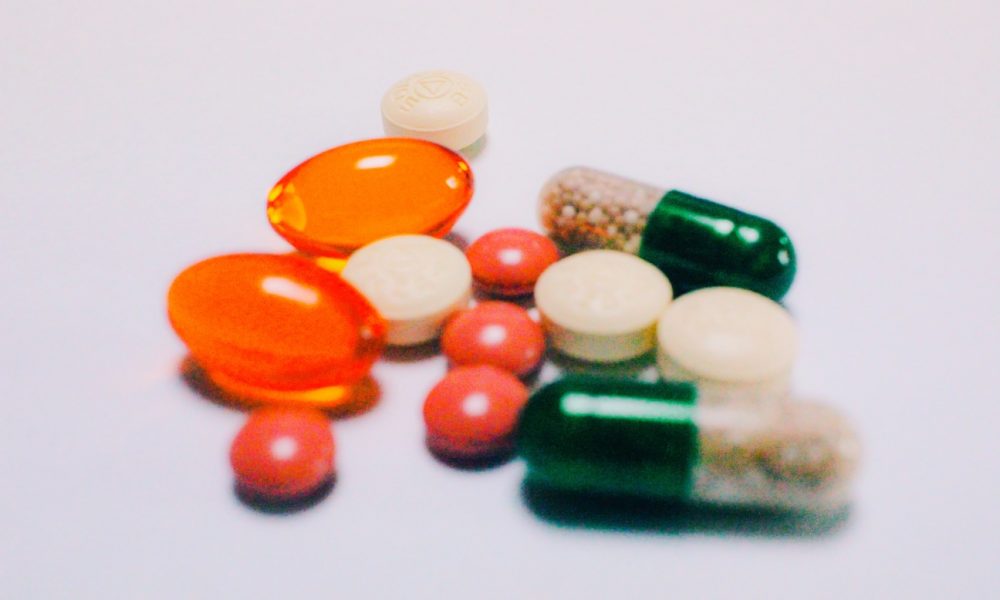
Minerals, Trace Minerals and Ultra Trace Minerals
There are 106 elements listed in the Periodic Table of Elements. But what exactly is an element? According to The Random House Dictionary of the English Language, an element is “Any of a class of substances, of which 106 are now recognized, that cannot be separated into similar substances by chemical means.”
Of the 106 elements, 16 are manmade, 22 are non-metals, and 68 are metals. Over time, man has come to realize that some of these elements are essential to the health and development of the human body. We call these types of elements mineral nutrients.
So how many of the 80 mineral elements are considered essential for human health? Not as many as you might think. According to the National Research Council, only 17 have substantiated nutritional value. They’re split into two groups — macro minerals and trace or micro minerals.
Macro Minerals: Calcium, phosphorus, magnesium, sodium, potassium, sulfur, chloride
Trace (Micro) Minerals: Iron, zinc, iodine, selenium, copper, manganese, fluoride, chromium, molybdenum
Your blood, bones, nervous system, cells, tissues, and immune system all rely on these specific minerals to keep your body functioning and thriving. Our bodies require larger amounts of the macro minerals and smaller quantities of the trace minerals. We get these minerals from the foods we eat and the supplements we take.
Ultra Trace Minerals – Do We Need Them?
The nutritional value of the other 63 elements (ultra trace minerals) is questionable at best. Deficiencies for ultra trace minerals have rarely been established in human beings. Of the ultra trace elements, only boron has been found to be deficient in some humans, and concerns regarding deficiency of cobalt might be relevant for strict vegetarians whose intake of vitamin B12 containing cobalt (as the chelate molecule Cobalamin) is severely limited.
Ultra trace elements like silicon, nickel, arsenic, cadmium, lead, lithium, tin, and vanadium have never been demonstrated as essential to the human diet. But vanadium, nickel, and tin have recently gained some acceptance in the area of nutritional supplementation. The abundance of silicon makes one question whether supplementation is generally warranted, and the nutritional needs for arsenic, cadmium, lead, and lithium are clouded by their well-known toxic properties.
Why would anyone willingly supplement their diets with minerals that have no known nutritional value but well-documented toxic effects?
Beware: Some Minerals are Poison
Even the most nutritionally essential minerals have a potential for toxicity or troublesome effects when one consumes too much. We must carefully monitor our intake of copper, zinc, selenium, or vanadium. With that in mind, how should one feel about his/her consumption of cesium or thallium, the radioactive isotopes used in nuclear medicine? If too much of a good thing isn’t good for you, how will your body handle too much of a bad thing?
Various supplement companies are marketing nutritional products containing elements that are natural but unessential to human health. Some companies report having as many as 72 different minerals and others even more. No human being needs that many different kinds of minerals! Not only lacking in nutritional value, these elements can actually be detrimental to your well-being. Some supplement makers tout their silver content. Others brag about gold. But these substances are often toxic. The heavy metal contaminates in our water supply and other environmental toxins that many of us find offensive are being packaged and sold to the public as “good-for-you” nutrients.
Elemental Dangers
There’s plenty of research backing up the dangers of ingesting such elements. Let’s take a look at some non-nutritive minerals like silver, gold, aluminum, lithium, and thallium. Industrial and medicinal silver exposure has reportedly caused lesions of the kidneys and lungs and arteriosclerosis. Chronic bronchitis has also been reportedly caused by the medicinal use of colloidal silver.i Dermatitis and stomatitis are the most frequently reported side effects of ingesting gold, which is found in some popular alcoholic beverages. Gold is also known to cause bone marrow toxicity, which can lead to bone marrow failure. Furthermore, ingested gold can suppress the immune system.ii
Long-term use of aluminum is thought to cause dementia in humans, and progressive and fatal neurologic syndromes have been associated with its use.iii Lithium has been found to cause the following toxic responses: neuromuscular changes such as tremor and ataxia; central nervous system changes including epileptic seizures and coma; cardiovascular changes like cardiac arrhythmia, hypertension and circulatory collapse; as well as anorexia and kidney damage.iv Thallium is a potent neurotoxin. Initial acute toxic exposure results in nausea and vomiting. Thallium can also cause coma, delirium, hallucinations and seizures, and is known to trigger psychological and emotional changes accompanied by intense depression and psychosis.v
What’s So Special About Colloidal Minerals? Absolutely Nothing.
The current edition of The Random House Dictionary of the English Language defines colloids as: A) a colloidal system, one in which a finely divided solid is suspended in a liquid: such colloids range from solutions to gels. B) a colloidal suspension. C) a substance that when suspended in a liquid will not diffuse easily through vegetable or animal membrane.
In other words, it’s any substance whose particle size is small enough to keep it suspended in a liquid or gas, yet large enough to prevent or delay its passage through a semi-permeable membrane.
Some supplement companies state that colloidal minerals are a revolutionary, disease-curing, life-extending miracle drug. Some have stated that colloidal minerals are so small they require no effort to be absorbed. The “too-good-to-be-true” news behind colloidal minerals proclaims that these particles are so small that they have direct permeability into your body’s tissues. Yet, colloidal substances by their nature will not diffuse easily through vegetable or animal membrane.
Colloidal Minerals
By definition, a colloidal mineral is one that is finely divided and suspended in a liquid. Why suspended? Why not dissolved? Because the mineral forms in the colloidal minerals are not soluble—not good! When a mineral form is dissolved in a liquid (soluble), it then exists in its smallest possible form—either as a part of a bioavailable molecule or as a positively charged atom. When other mineral forms present themselves to the intestine for absorption, they are in their smallest possible form or liquid form. Colloidal minerals are not. According to Remington’s Pharmaceutical Sciences, colloidal mineral particles each consist of many aggregates, and each aggregate contains many molecules. Therefore, colloidal minerals exist in particle sizes many times larger than other mineral forms.
In addition, some have claimed that colloidal minerals are negatively charged, and thus are strongly attracted to the positively charged surfaces of the intestinal lining, where absorption takes place. A quick review of basic absorption physiology tells us the intestinal lining has a negative charge, not a positive charge. If colloidal minerals are negatively charged, they would be repelled by the intestinal lining, not attracted to it, making their absorption impossible.
By the way, just what is the chemical makeup of a colloidal mineral? The word colloidal describes the physical form, not the chemical form. Are they oxides (iron rust)? Free metals? Metal ore? Many are toxic elements. One text states they are clay minerals extracted by organic acids (probably humic and fulvic acids). And their marketers claim them to somehow be of negative charge. Most people taking colloidal minerals really don’t know what they are putting in their bodies.
Safety First with Albion Minerals
Why supplement your diet with unnecessary, life-threatening minerals? When it comes to mineral supplementation, it’s certainly not a case of “the more the merrier.” A reputable nutritional supplement company makes every effort to offer products to the public that contain minerals at safe levels for the human body. Albion Human Nutrition prides itself on offering its customers only minerals of proven nutritive benefit. Our patented mineral amino acid chelates are the finest and purest possible form of mineral available. We use only the highest USP grade raw materials, which are known for their safety from nonnutritive mineral contamination. You can always trust Albion to provide you with safe and effective mineral supplementation.
References
- J. Doull, et al., (Casarett and Doull’s Toxicology, The Basic Science of Poisons. Third Edition, 1986, p. 625).
- Op. Cit., p. 621
- Op. Cit., p 619-620
- Op. Cit., p. 621-622
- J.B.Sullivan, et al., ed. Sullivan and Krieger’s Hazardous Materials Toxicology, Clinical Principles of Environmental Health, Williams & Wilkins, 1992, p. 908-910)


